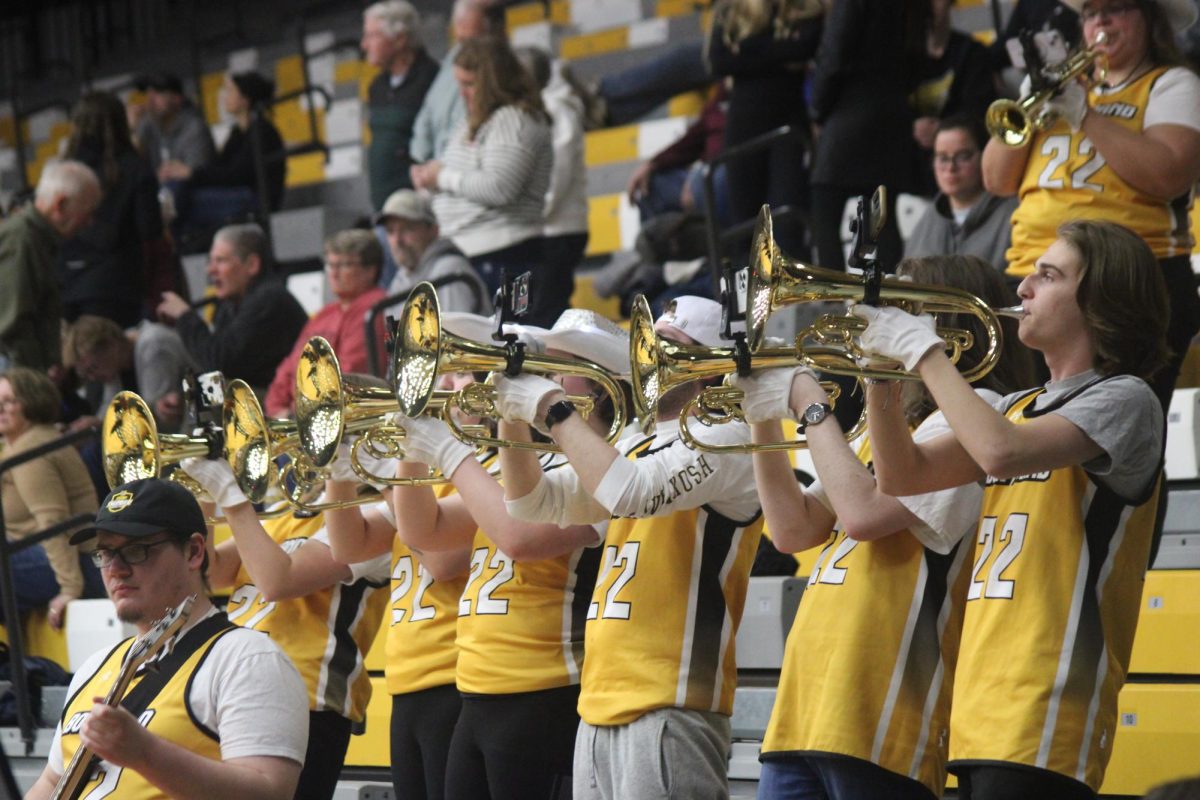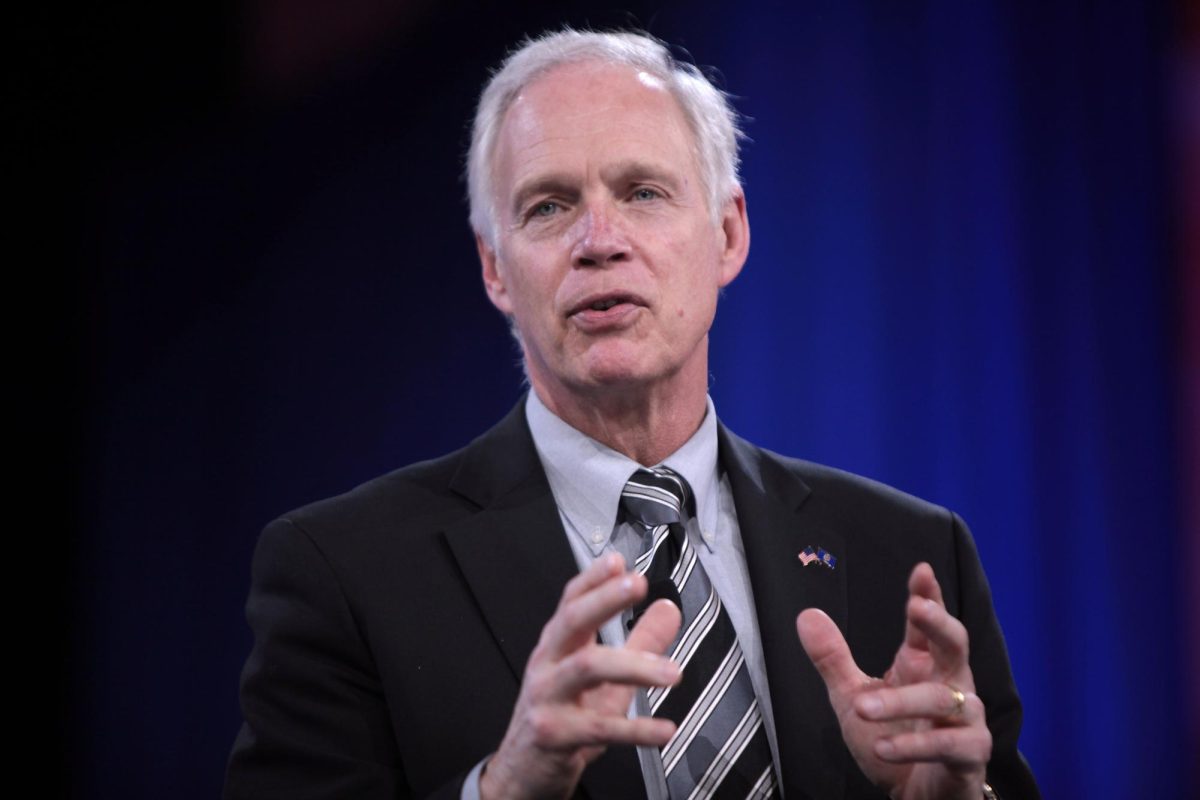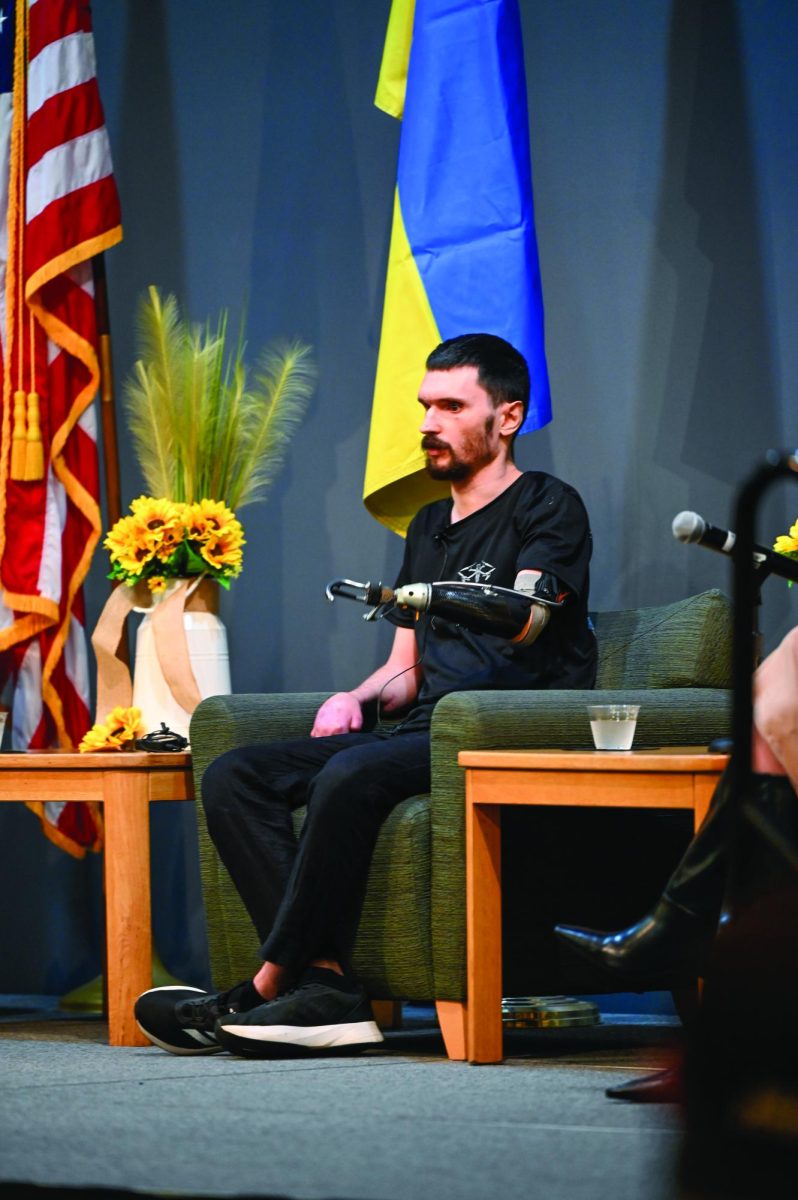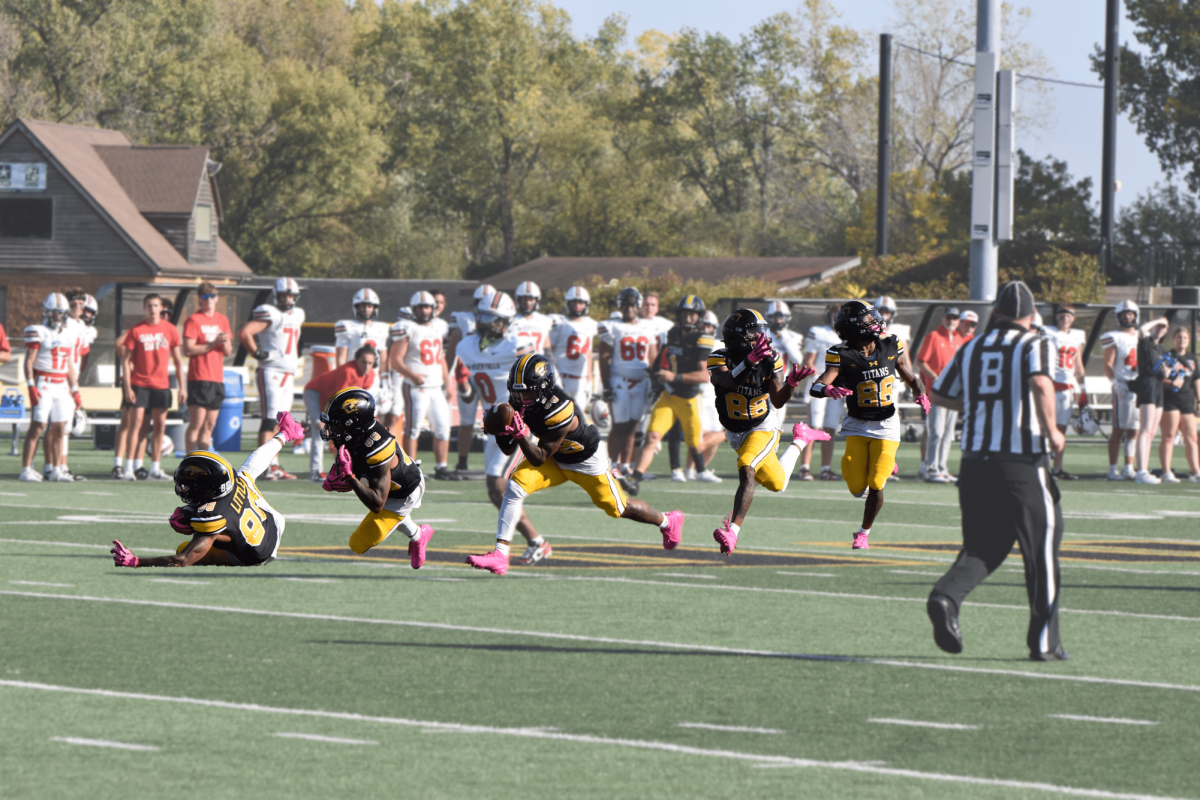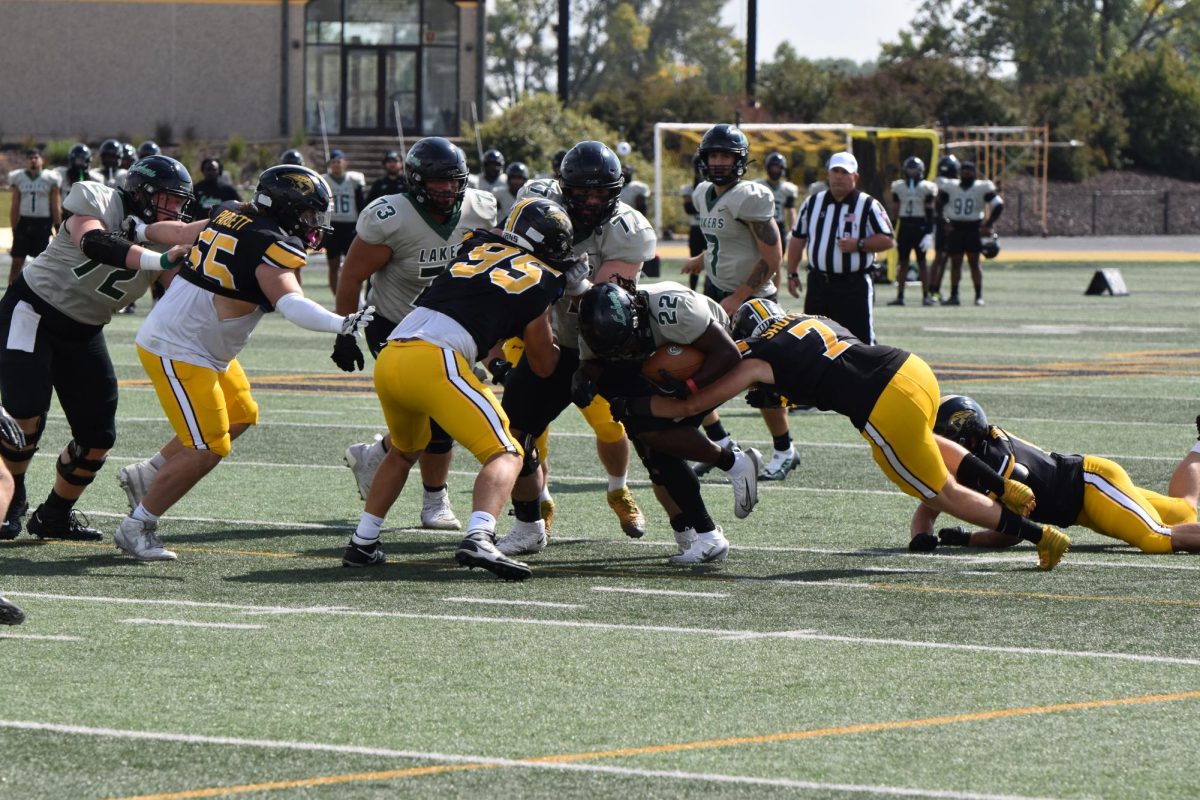After two years of operation, Oshkosh’s marching band and pep band have used up their $800,000 startup fund.
When the program was conceived in fiscal year 2022, they were given a timeline: spend the full budgeted amount through fiscal year 2024 and at the end, the university will cover the $800,000.
“The $800,000 for what I call year zero, which would be 2022 to 2023, was the investment that the university made in terms of all the startup things,” Joseph Scheivert, the director of athletic bands, said.
In Scheivert’s research, UWO had no documentation of a marching band after the 1980s — 40+ years ago. The university needed to start from square one.
“We had to spend hundreds of thousands of dollars to get uniforms and instruments and equipment and things prepared so we could even do things right,” Scheivert said. “[$800,000] is not a consistent spend for us.”
Besides uniforms and instruments, the band required a facility to function out of — another large cost for the new group.
“The marching band facility, which is what it was labeled in our analysis, is not really just a marching band facility,” Alex Hummel, chief of staff of the university said.
The facility is currently housing both bands, the football team and the facilities department for UWO.
“You really need to divide up the total cost of the building, which was something on the order of $784,000, by three to fairly parcel out the costs,” Hummel said.
In fiscal year 2023, the marching band’s first year of operation, operating costs sat at $312,754. In fiscal year 2024, those costs dropped to $282,224.
“Why is it lower? Because we’re working on strengthening that budget and making sure it’s affordable,” Hummel said.
From a university standpoint, the marching band was meant to be a recruitment and retention tactic. With a robust program comes automatic community.
Brayden Parato, a mellophone player and social media team member, joined the marching band this year as a freshman. He credits the band as the reason he committed to UWO.
“During my senior year of high school, I got to see the Titan Thunder marching band perform an exhibition at Oak Creek High School’s marching band invitational,” Parato said. “What stood out to me then was that even though the band was so new, they looked and sounded amazing.”
Parato said the exhibition was the first time he had seen a Division III school’s marching band do a pregame show — and it felt just like watching a Big 10 school.
“The band itself spoke out very clearly to the students,” Parato said. “I could tell that this was a very loving environment where people cared about each other, and they all had one goal, which was to make the best marching band they could.”
Parato looked at other schools before deciding on UWO, but they didn’t have marching bands. It wasn’t a deal breaker, but it also wasn’t ideal. His choice came down to UW-La Crosse and UWO.
“I wanted to be a part of a marching band that was more so a traditional college marching band rather than a continuation of high school,” Parato said.
His friends had great things to say about the marching band at UWL, but he wanted to be a part of something new. He wanted to help build the program.
Feedback about the band has been overall positive from those involved directly with the university and community members alike.
“I’ve gotten considerable positive comments from all constituent areas since the band had started,” Sheivert said. “I tell folks that we perform like a band with a long history, even though we don’t [have one].”
Both Scheivert and Hummel agree that the marching band and the pep band have considerably added to the atmosphere of sporting experiences on campus.
However, that doesn’t leave the band without scrutiny.
In April 2021, the university announced its plan to debut the marching band in the fall of 2022 — just one year before UWO announced it was in a budget deficit of $18 million.
“I know that people have certainly asked questions about the level of investment in [the band], but it’s a student experience at UWO,” Hummel said. “We hope to continue [its development] as a recruiting and retention asset for the university in addition to that student experience.”
Hummel emphasized that the band is only just shy of three years old.
“I think a lot of people came with an expectation that on year one, or day one, [the band] would immediately be a neutral cost to the university,” Hummel said. “And obviously, no one’s arguing that that’s the case. It took investment.”
Right now, Hummel said the university was responding to a student-led interest in a marching band, and now they are measuring its success.
“We’re still kind of learning that,” Hummel said. “In time, I think it’s going to be an even more solid investment, for sure. For the good of everybody, but particularly for students.”
The marching band’s current biggest challenge comes in spreading the word and getting students to sign up.
Scheivert has noticed that marching bands are not a particularly strong part of high school music curricula in the area surrounding Oshkosh.
“When I speak to local students who have elected to go to school at UWO and I mentioned marching band, a number of times they say they don’t do marching band, that’s not in their experience,” Scheivert said. “And so they feel like that’s a big leap for them to take when they come here.”
Another problem is the marching band’s age.
“You can treat our program like one that has years and years of tradition,” Scheivert said. “Ultimately, it doesn’t, and so the high school directors in the region don’t always have a lot of experience with our band.”
With this comes no alumni who have graduated from the band and can now direct students into the program.
“It doesn’t have the name recognition of [other groups] just because there hasn’t been time to do that,” Scheivert said.
The marching band currently has 96 members, and Scheivert is hoping to surpass 100 by next year. While there is always the fear that enrollment will drop, there isn’t much evidence to suggest that it will.
“Even though our enrollment in the university has dropped in the span of what was our year one and two, the enrollment in the band grew quite a bit,” Scheivert said. “I’ve always thought it’s not like there aren’t enough students here to make our goal. We can double our numbers with the number of students that go to school here.”
Scheivert said he’s pleased with the positivity the community has shown the program in its initial years.
“While it was a lot of my own work, it was a lot of work for other folks across campus,” Scheivert said. “There were dozens of people that were involved in so many aspects of this, whether it was the financial things or even just for us to have our practice field.”
He credits the grounds facilities for putting in extra hours to make the field great.
“We have so many students and their supportive families and supportive high schools who value this opportunity, and I think that lets us put on excellent performances,” Schievert said. “It helps us be involved in the community, and it’s a result of all these folks’ time and effort.”
Scheivert believes they are the ones who deserve the credit for the marching band’s success.


